
Alabama is home to 33 miles of the Natchez Trace Parkway. Carol M. Highsmith
If you’re from Alabama, and you’ve been on a plane, at some point you’ve explained to the stranger beside you that your home state is not one huge cotton field. Indeed, there’s a common misperception that Alabama is a monolithic, rural environment from one end to the other.
In fact, Alabama is one of the most biologically diverse states in the country, with at least 64 ecosystems, including forests, wetlands, prairies, rivers, streams, and marine ecosystems in its 52,419 square miles. All that diversity—and the adventure that goes with it—is ready to be explored during an easy-to-tackle road trip.
Indeed, if you’re still thinking about options for summer vacation, the 760-mile road trip we’ve outlined below will offer plenty of exploration. Along the way, you’ll encounter lush wilderness areas, mountains, canyons, and white sand beaches where you can hike, bike, climb, kayak, swim, or just relax after a few hours in the car.
As you travel Alabama’s highways and byways, you’ll also follow the course of its rich cultural history. While some roads trace ancient paths used by Native Americans, others follow the footsteps of Civil Rights marchers.
To help you get the most out of an Alabama road trip, here’s a 7-day itinerary that takes you off the beaten path to pursue a wide range of adventures.
Day 1
Natchez Trace Parkway to the Bankhead National Forest ** 87 miles, approx. 1.5 hours**
Begin your journey at the Alabama/Tennessee border and travel south on the Natchez Trace Parkway, winding through quiet woodlands and pastures with nature paths and historic sites dotting the way.
For more than 10,000 years, people have traveled this route, which is now a National Scenic Byway that stretches 444 miles from Mississippi to Tennessee. It was not only a footpath for Native Americans, but also a trade route for settlers in the 18th and 19th centuries.
From the Natchez Trace Parkway milepost 341, continue southwest for about 11 miles to reach Rock Spring, where a nature trail will lead you to the deep pools of a small natural spring.
Continuing on the Natchez Trace Parkway, you’ll cross the Tennessee River and at milepost 320 arrive at Buzzard Roost Spring. In the 1800s, the site was known as Buzzard Sleep, because the Chickasaw chief Levi Colbert ran an inn for travelers. Here, you can take a short walk to the spring that served as a water source for Colbert’s inn.
After visiting Buzzard Roost, take Alabama Highway (AL) 72 East for about 50 miles to Moulton. Then take AL 24 to AL 33 and travel south to reach the Bankhead National Forest.
Covering more than 180,000 acres, the Bankhead is known as the “land of a thousand waterfalls,” and it includes the Sipsey Wilderness, which resembles the north Georgia mountains with wild streams, limestone bluffs, hemlock trees, and mountain laurel.
After you travel approximately 14 miles on AL 33, you can take a quick detour to access the Borden Creek trailhead for a day hike or overnight trip in the Sipsey Wilderness. Turn right onto Winston County Road 60, go 0.6 miles and turn right onto FS224 at the Borden Creek Trailhead sign. If you continue 2.2 miles, you’ll reach the trailhead parking area.
Day 2
Lookout Mountain Parkway to the Appalachian Highlands **165 miles, approx. 3.5 hours**
 Little River Falls in Little River Canyon is one of Alabama’s most scenic waterfalls. Jody Claborn
Little River Falls in Little River Canyon is one of Alabama’s most scenic waterfalls. Jody Claborn
On Day 2 you’ll cross Alabama to ride along the spine of its eastern mountains.
From the trailhead parking lot in the Sipsey Wilderness, return to AL 33 and travel south about 13 miles to Double Springs. Then, go east on AL 278 90 miles to Noccalula Falls Park in Gadsden.
During the drive to Gadsden, stop in downtown Cullman for lunch at the Red Door Emporium Café, which occupies a house dating back to the 1800s. Order a tasty biscuit or chicken-salad sandwich, and for a cool souvenir of your trip, check out the paintings, pottery, and other artwork made by Alabama artists.
At Noccalula Falls, take in the view of the park’s 90-foot waterfall, which is one of the most frequently visited natural landmarks in the state. From the park, take Tabor Road and travel northeast to begin your journey on a portion of the Lookout Mountain Parkway, which passes waterfalls, canyons, scenic views and small towns, from Gadsden to Chattanooga.
Follow Tabor Road, which becomes AL 176 and County Road. 89. In Fort Payne, turn right on AL 35, and then travel about 8 miles to Little River Canyon National Preserve.
Boasting some of the most rugged terrain in the state, Little River Canyon offers sandstone cliffs for rappelling and climbing, as well as wild streams for fishing, swimming, and paddling. If you hike the trail to Little River Falls and continue downstream, you’ll reach Martha’s Falls, where rock outcrops surround a deep swimming hole.
If you’d rather press on, take AL 35 to Alabama Highway 176 and turn right to begin a scenic drive along the rim of the canyon. Up for roughing it for the night? Drive to Little River Canyon’s Slant Rock backcountry site, which is right on the river. (There are no amenities.) For something a bit cushier, head to the campground at nearby DeSoto State Park.
Day 3
Little River Canyon to Cheaha State Park ** 80 miles, approx. 1.5 hours**
 Cheaha Mountain is the perfect lookout at Cheaha State Park. Alan Cressler
Cheaha Mountain is the perfect lookout at Cheaha State Park. Alan Cressler
After you’ve explored Little River Canyon, backtrack to AL 35 and travel southeast to follow the Appalachian Highlands Scenic Byway to wind through a pastoral landscape with cotton fields and pastures tucked away in mountain valleys.
In the town of Blanche, turn onto AL 273 and travel south approximately 16 miles to Leesburg. Travel south about 1 mile on AL 68 and turn left onto US 411/AL 68. Go 5.6 miles and turn right onto Piedmont Rd/AL 9. From here, your next stop is Cheaha Mountain, the highest point in Alabama.
For a more adventurous, off-the-beaten-path route to Cheaha, proceed to U.S. Highway 78 and, just west of Heflin, turn right onto AL 281 to travel south and follow the crest of the Talladega Mountains. You’ll go another 20 miles to reach
Cheaha State Park.
Sitting at 2,407 feet above sea level, the park offers awesome 360-degree views of the surrounding Talladega National Forest.
The park also provides access to miles of hiking trails that traverse immense forested areas. From the park’s Cheaha Trailhead you can reach the Pinhoti Trail, a 335-mile path that passes through Alabama and north Georgia to connect to the Appalachian Trail. Another option is to begin at the Cheaha Trailhead and hike three-plus miles to McDill Point, a west-facing outcrop where you can relax in a hammock and enjoy sunset.
Cheaha State Park is also the jumping off point for the Odum Scout Hiking Trail, which stretches 7.5 miles along the eastern slopes of Talladega Mountain in the Cheaha Wilderness Area. For experienced mountain bikers, the park has about six miles of trails with fairly rocky terrain, a few short but steep climbs, and fast sections of singletrack.
After a day of adventure, you can choose from a wide range of park accommodations, including primitive and improved campgrounds as well as cabins.
Day 4
Cheaha Mountain to the Black Belt Nature and Heritage Trail** 177 miles, approx. 3 hours**
 The Edmund Pettus Bridge’s unique design makes this structure a spectacular sight. Tony Webster
The Edmund Pettus Bridge’s unique design makes this structure a spectacular sight. Tony Webster
After your deep dive into the mountains, emerge on day four to tour several historical sites in the Black Belt region of the state. Known for its rich soil, the Black Belt was home to cotton plantations in the 19th Century. After the Civil War, this part of the state was a focal point for the Civil Rights movement. Over the years, the Black Belt has also become known for its soul food and thriving folk art.
From Cheaha State Park travel southeast on AL 281 for 3.3 miles, and then turn right onto AL 49. Travel south on AL 49 for 80 miles and then follow County Highway 36 and AL 126 another 7.3 miles to Tuskegee.
In Tuskegee you’ll find several excellent African-American history museums, including the George Washington Carver Museum and the Tuskegee Airmen Museum, which chronicles the heroic efforts of African Americans who flew and fought in World War II.
Because Tuskegee is a college town, you’ll find plenty of places for a snack, but don’t get too full. From Tuskegee, you’re going to make your way to I-85 and travel west for just 40 minutes to reach downtown Montgomery and the Railyard Brewing Company. Choose from a wide range of beers on tap, including the Barrel Aged Big O Stout, the Deadhead American Pale Ale, and special small batches brewed on Fridays. The Railyard also serves a wide range of food, including burgers, fish tacos, and even etoufee.
From the pub, you only have to go a few blocks to reach the State Capitol Building and the Museum of Alabama, which is located at the Alabama Department of Archives and History. The museum is a must-see, with hundreds of artifacts, images, documents, and audiovisual programs that tell the story of the Civil War, industrialization in the state, world wars, civil rights, and the Space Program.
Continuing your trip through time, leave the Capitol and take I-85 South a little over a mile to U.S. 80 West. Travel about 50 miles on U.S. 80 West and you’ll cross the Alabama River on the Edmund Pettus Bridge.
On March 7, 1965, this steel bridge became one of the iconic landmarks of the civil rights movement, when law enforcement officials used billy clubs and tear gas to attacks civil rights marchers. Television coverage of the violence rallied the country to support the marches, and less than five months later President Lyndon Johnson signed the Voting Rights Act of 1965.
Day 5
Selma to Gee’s Bend and the Gulf Coast **195 miles, approx. 4 hours**
 A member of the famous Gee’s Bend quilting group. Andre Natta
A member of the famous Gee’s Bend quilting group. Andre Natta
On Day 5 you’ll leave Selma and move off the beaten path to visit Gee’s Bend, one of the state’s most remarkable destinations.
Situated along the Alabama River, the small hamlet of Gee’s Bend is home to a community of famous quilters whose work has been displayed in art museums throughout the country. Historians consider these quilts some of the country’s most important pieces of African-American art.
From Selma, travel south on Al 41 for about 35 miles to Camden. Then, follow AL 28 north to Ellis Landing Road. Turn right and drive approximately three-quarters of a mile to a ferry landing. The ferry will take your vehicle across the Gee’s Bend, where you can visit the Quilting Collective, which has displays on the history of the quilts, plus a large collection of quilts and artwork available for purchase. Also, quilters usually gather at the Boykin Nutrition Center to quilt from 8:30 am to 1:30 pm, Monday through Thursday.
After visiting Gee’s Bend you’ll begin a three-hour drive to Orange Beach on the Alabama Gulf Coast, where you can relax on the beach and enjoy the sunset.
From Camden, take AL 265 and AL 21 south to I 65. Take I 65 South 19 miles and exit to take AL 287 for 23 miles and then take I 10 East. Go 5 miles and take exit 49 to travel south on the Baldwin Beach Expressway for about 25 miles. (There is a toll to cross a bridge near the end of the Expressway). Turn left to travel east on AL 180 to reach Orange Beach.
Because the Gulf Coast has become such a popular destination, you’ll need to book your accommodations in Orange Beach as far in advance as possible. After arriving at your rental house or condo, head out to the Palms Bar & Grille for a waterfront table and seafood feast.
Day 6
Orange Beach and Gulf Shores **6 to 7 miles, approx. 12 minutes**
 Make sure to stick around for the incredible sunsets on the Alabama Gulf Coast. Suzanham
Make sure to stick around for the incredible sunsets on the Alabama Gulf Coast. Suzanham
Take a break from the long drives for a day of enjoying the sand, surf, and the outdoor adventure on the Gulf Coast.
You might want to just grab a book and a beach chair and spend the day soaking up rays. Chances are, your house or condo will have access to great beaches, but you can also head west about seven miles to access beaches at the Gulf State Park Pavilion, 2nd Street Public Beach, and the Gulf Shores Public Beach at the end of Alabama Highway 59.
But for a more active-minded itinerary, deep-sea fishing is an excellent option, especially for anglers: Orange Beach boasts the largest offshore charter fishing fleet along the Gulf Coast. Whether you want to go out for a few hours or a full day, you’ll have no problem finding a charter that suits your needs.
While the ocean takes center stage for recreation, the Gulf also has plenty of inland lakes perfect for kayaking and stand-up paddleboarding. Head over to Lake Shelby at Gulf State Park to paddle calm waters and watch for osprey and eagles soaring overhead. At Alabama Paddlesports, rent kayaks and stand-up paddleboards or even book a guided kayak tour.
For dinner, try the famous banana-leaf-wrapped fish or sushi at Cosmo’s Restaurant and Bar, or get another waterfront seat at one of the three Tacky Jacks restaurants in the area.
Day 7
Orange Beach to Dauphin Island and Bayou La Batre **53 miles, approx. 2 hours**
 The birds at Dauphin Island, like this egret, are captivating. Stephanie Pluscht
The birds at Dauphin Island, like this egret, are captivating. Stephanie Pluscht
On Day 7 your Gulf Coast adventure continues with a drive west to Dauphin Island, a barrier island that’s home to a research lab, aquarium, and an Audubon Bird Sanctuary.
From Orange Beach, travel west on AL 180 for about 30 miles to reach the Dauphin Island-Fort Morgan Ferry. Take the ferry to Dauphin Island, and then proceed to the Estuarium that includes a 7,000-gallon stingray touch pool and the Living Marsh Boardwalk.
In the afternoon, drive west 20 miles to Bayou La Batre, the small town made famous by the book and film Forrest Gump. Considered the seafood capital of Alabama, Bayou La Batre has a clutch of harbors and shipyards that employ master ship builders and shrimpers, including a significant population of Vietnamese. If you explore the village, you might even encounter a Vietnamese grocery store.
Ironically, there aren’t many seafood restaurants in Bayou La Batre, but make the trip to The Lighthouse Restaurant in nearby Irvington to sample the shrimp and crab claws. If you’ve booked your Orange Beach accommodations for several days, you can head back, as Bayou La Batre marks the end of your 760-mile journey across Alabama.
Written by Marcus Woolf for RootsRated in partnership with BCBS of AL.
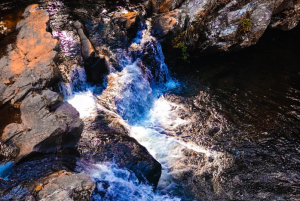
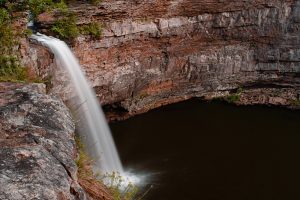
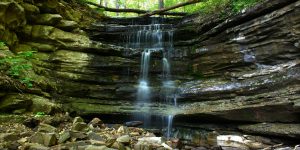
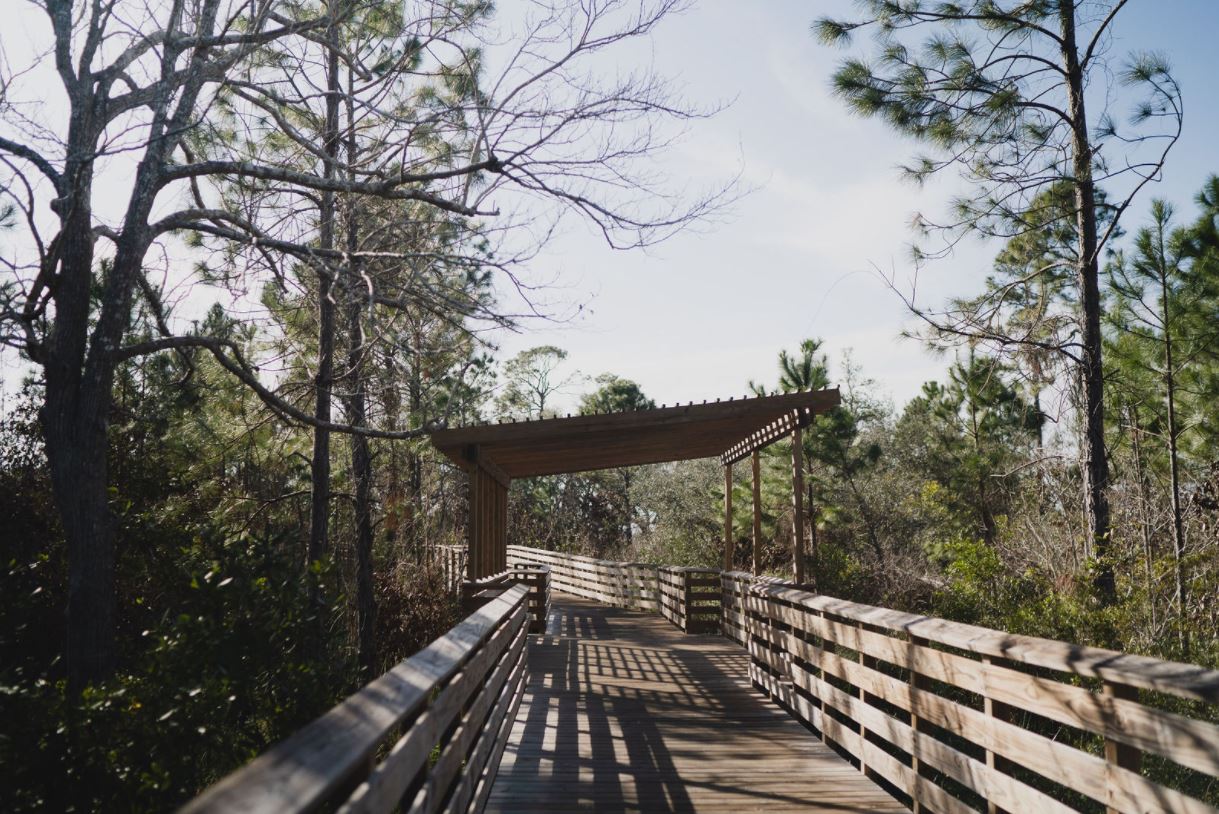







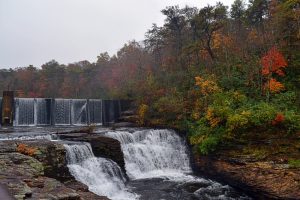
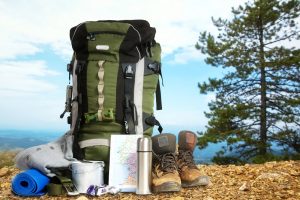
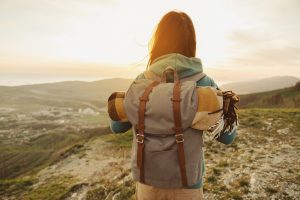


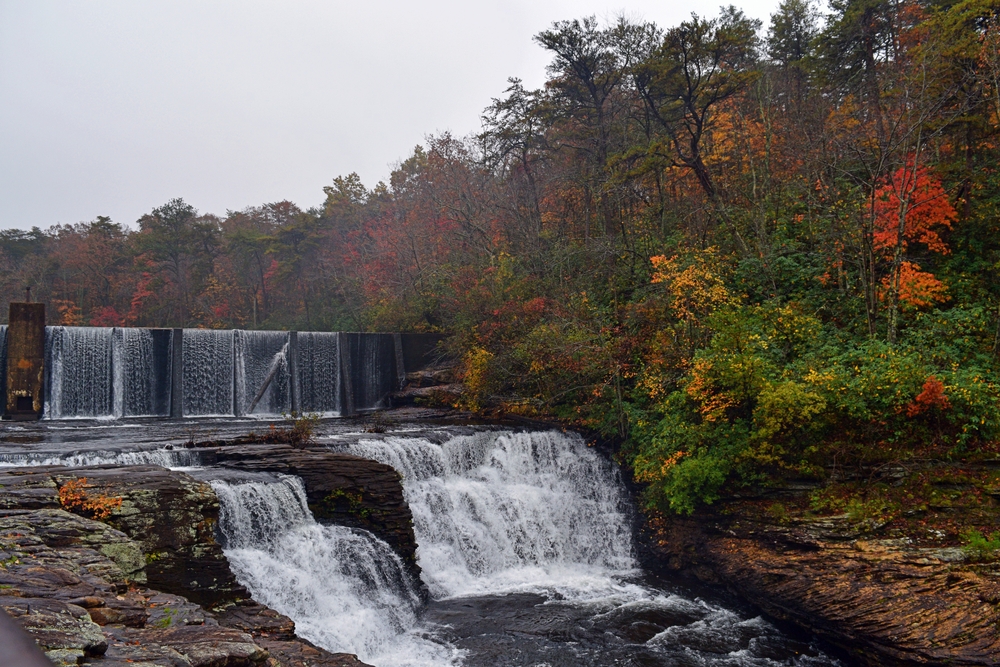





 Little River Falls in Little River Canyon is one of Alabama’s most scenic waterfalls.
Little River Falls in Little River Canyon is one of Alabama’s most scenic waterfalls.  Cheaha Mountain is the perfect lookout at Cheaha State Park.
Cheaha Mountain is the perfect lookout at Cheaha State Park.  The Edmund Pettus Bridge’s unique design makes this structure a spectacular sight.
The Edmund Pettus Bridge’s unique design makes this structure a spectacular sight.  A member of the famous Gee’s Bend quilting group.
A member of the famous Gee’s Bend quilting group.  Make sure to stick around for the incredible sunsets on the Alabama Gulf Coast.
Make sure to stick around for the incredible sunsets on the Alabama Gulf Coast.  The birds at Dauphin Island, like this egret, are captivating.
The birds at Dauphin Island, like this egret, are captivating.